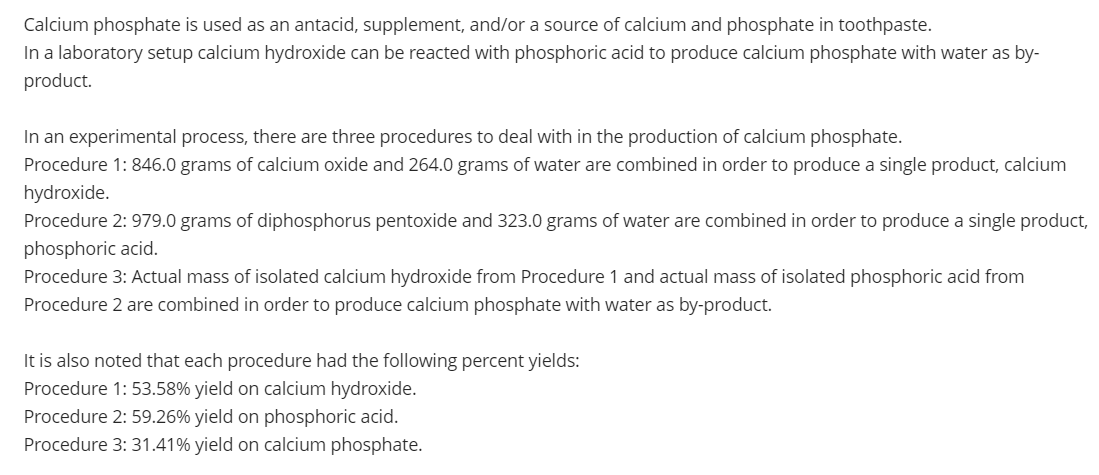Which of the following balanced chemical equations pertains to the chemical reaction involved in Procedure 3?
Which of the following balanced chemical equations pertains to the chemical reaction involved in Procedure 3?
Chapter9: Parenteral Medication Labels And Dosage Calculation
Section: Chapter Questions
Problem 6.7P
Related questions
Question

Transcribed Image Text:Calcium phosphate is used as an antacid, supplement, and/or a source of calcium and phosphate in toothpaste.
In a laboratory setup calcium hydroxide can be reacted with phosphoric acid to produce calcium phosphate with water as by-
product.
In an experimental process, there are three procedures to deal with in the production of calcium phosphate.
Procedure 1: 846.0 grams of calcium oxide and 264.0 grams of water are combined in order to produce a single product, calcium
hydroxide.
Procedure 2: 979.0 grams of diphosphorus pentoxide and 323.0 grams of water are combined in order to produce a single product,
phosphoric acid.
Procedure 3: Actual mass of isolated calcium hydroxide from Procedure 1 and actual mass of isolated phosphoric acid from
Procedure 2 are combined in order to produce calcium phosphate with water as by-product.
It is also noted that each procedure had the following percent yields:
Procedure 1: 53.58% yield on calcium hydroxide.
Procedure 2: 59.26% yield on phosphoric acid.
Procedure 3: 31.41% yield on calcium phosphate.

Transcribed Image Text:Which of the following balanced chemical equations pertains to the chemical reaction involved in Procedure 3?
Expert Solution
This question has been solved!
Explore an expertly crafted, step-by-step solution for a thorough understanding of key concepts.
Step by step
Solved in 2 steps

Recommended textbooks for you



